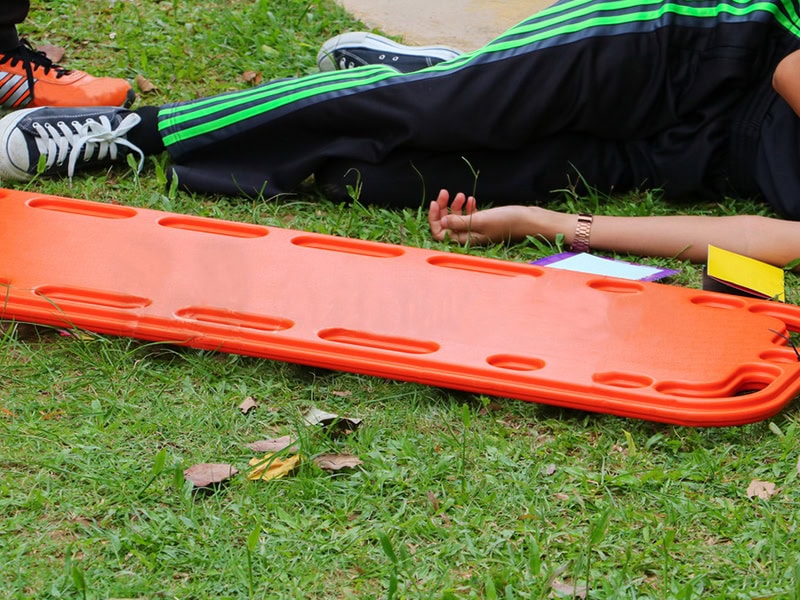If you’re looking to safeguard accident victims’ bodies, spinal board stretchers are an absolute must. Correct use of spine boards following a traumatic incident such as a car accident, fall, or sports-related injury determines whether patients will heal or develop lasting disabilities.
But spinal boards come in different variety–each with an intended use case. As someone in emergency medical services (EMS), you will need to know which spine board fits the situation. Learn about spinal board stretcher types, particular use cases, and defining characteristics.
But first, let us define what a spinal board is.
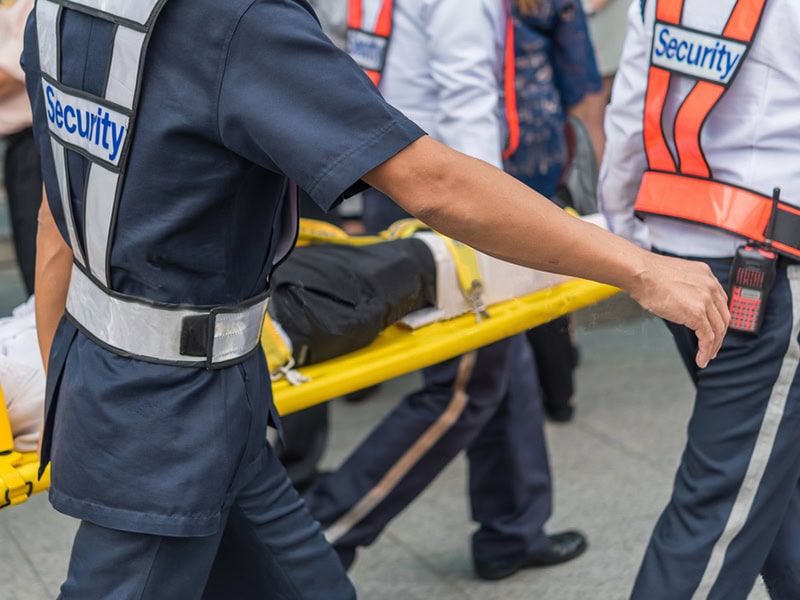
What Are Spinal Board Stretchers?
More than half of spinal injuries affect the cervical region. Spinal board stretchers, commonly known as spine boards, are rigid equipment that preserves spinal stability for patients whose cervical spine needs protection. Spinal boards help EMS, hospital staff, and trauma care providers transport patients with neck, torso or spinal trauma to maintain their safety and protect their medical condition from worsening.
Spinal board stretchers are designed to:
- Restrict cervical spine motion to prevent secondary injuries.
- Support the patient’s head, neck, and torso in a neutral position.
- Facilitate easy lifting and transport from the ground or other difficult locations.
- Allow for medical procedures such as circulation assessment, pain management, and patient monitoring while keeping the patient immobilized.
Common Use Cases
- The emergency services employ spinal board stretchers under specific conditions including car accidents and falls and workplace injuries.
- High-impact auto accidents require the use of a long spine board to sustain unstable patients until further assistance arrives.
- Transfer of patients who suffer from back injury symptoms or exhibit potential fracture characteristics becomes simpler using these methods.
- Transparent water rescue spine boards maintain MR access because they offer complete transparency for imaging without the need to remove the device.
- When performing rescues in restricted areas protective devices such as Kendrick Extrication Devices (KEDs) and short spine boards allow for safe rescue operations.
- NAR spine boards with pediatric strapping options help sports and adventure rescue operations which require spinal immobilization for athletes and children.
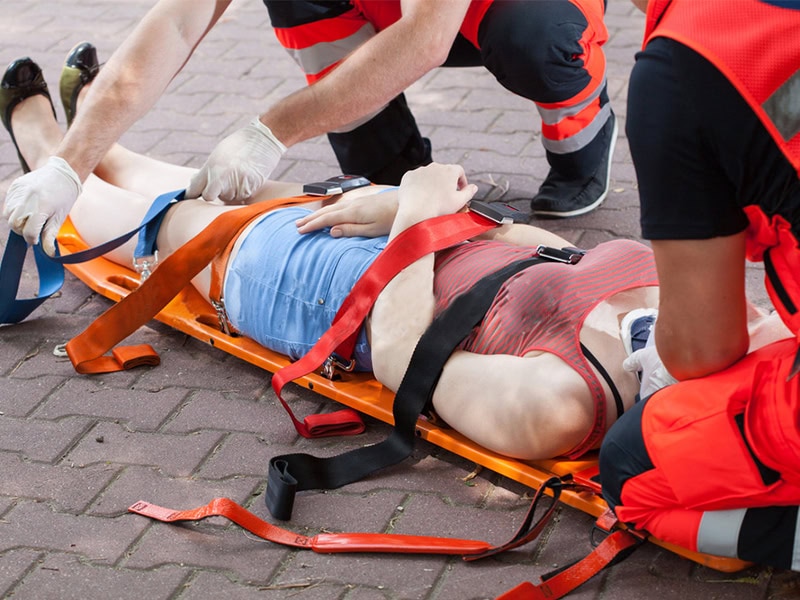
Types of Spinal Board Stretchers
Different emergency situations dictate the specific types of spinal board stretchers to keep patients safe during spinal immobilization procedures. Selecting the right board depends on the nature of the injury plus environmental conditions and necessary control constraints. We have outlined the different types of spinal board stretchers along with their main benefits and their application scenarios.
1. Long Spine Boards (LSBs)
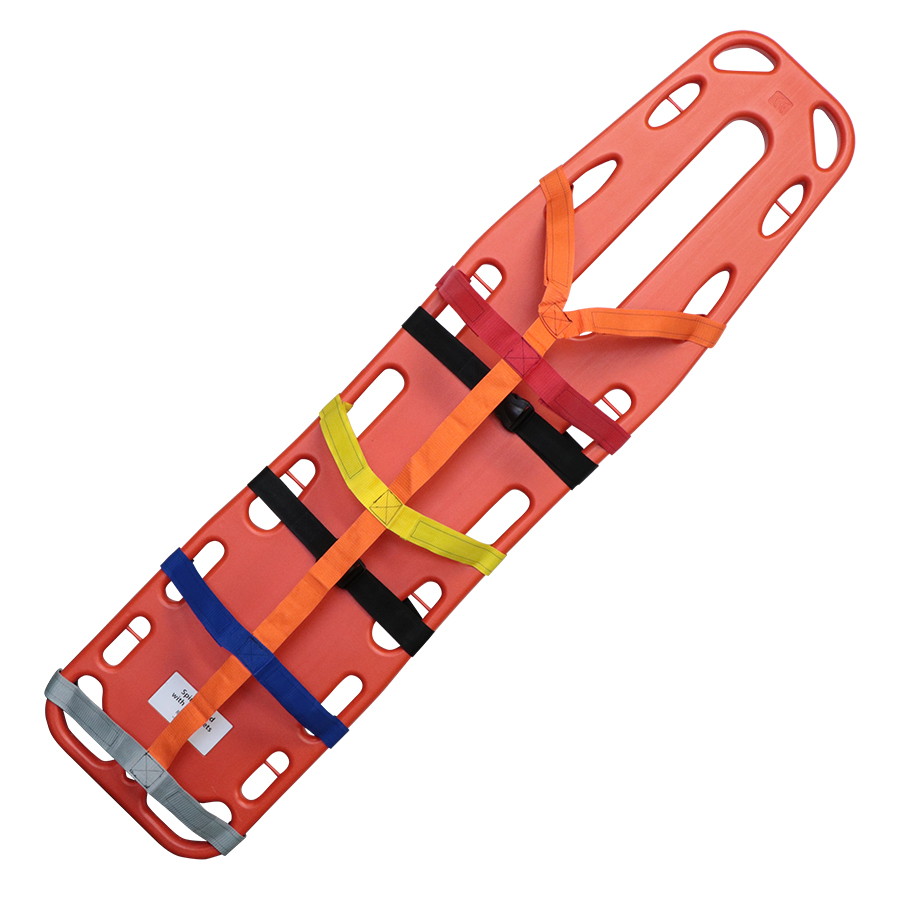
Emergency medical services (EMS) use long spine boards (LSB) as their go-to spinal immobilization device. These boards offer complete body support, ensuring minimal spinal motion restriction from head to legs. The boards utilize HDPE material with rotomolded technology for creating durable structures that fight against bodily fluids.
These devices have been made fully transparent to meet magnetic resonance imaging requirements. X-rays and imaging procedures become possible through these boards without requiring removal of the patient. The narrow body shape of these devices permits movement through restricted areas.
Applications
- Emergency medical personnel use this piece of equipment for spinal injury assessment in traumatic situations such as motor vehicle accidents and falls.
- The device serves as an excellent choice for treating unconscious patients who need complete spinal immobilization.
- Emergency departments and ambulance services and pre-hospital rescue teams widely use these devices.
2. Short Spine Boards (SSBs)
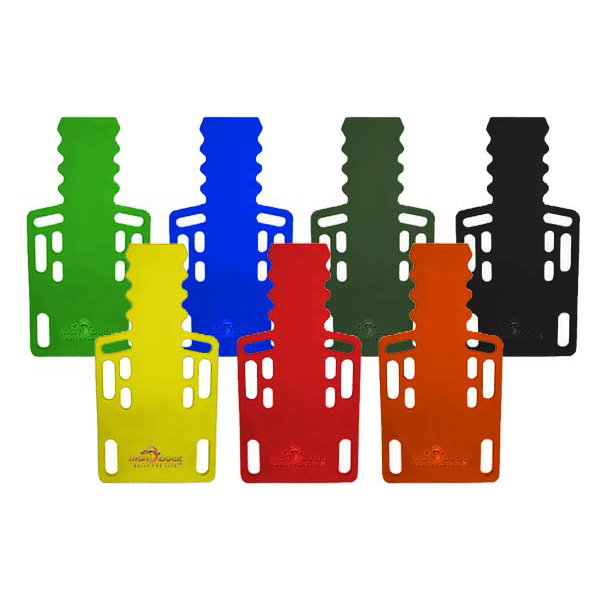
Short spine boards serve patients in restricted rescue areas for emergency vehicle extrications. Unlike long spine boards, these are typically smaller while requiring cervical collars and chest restraint straps during use.
Every second of rescue time depends on having spine boards that function well. Lifting and maneuvering patient treatment becomes easy because SSBs are both compact and lightweight: properties which are crucial during challenging rescue operations. The molded runners allow for easy setup support while the straps across the chest and torso area secure the patient in any moving situation.
Applications
- The device serves medical personnel in KED applications when emergency responders must move patients from car crashes without unnecessary spinal adjustments.
- Medical staff use these boards when patients display cervical spine injury signs but do not need whole body immobilization.
- EMTs use this device for urgent extrication of patients from vehicles along with collapsed buildings or restricted spaces.
3. Vacuum Spine Boards
In high-stakes rescues, precision matters. A vacuum spine board has a totally clear design that supports MR scans allows critical assessments to be performed on patients without movements which lessens risks. EMS physicians find it easy to move patients through windfall situations due to the board’s light weight and straightforward handling method.
Plus, a vacuum spine board’s subtle surface texture shapes to the patient’s body through vacuum suction which reduces pressure points to enhance spinal immobilization function. These devices provide patients a customized fit because they adjust to match the body shape which reduces discomfort as well as enhances blood circulation.
Best For:
- Long transport durations where patient movement restriction must be maintained.
- Fragile spinal injuries, especially cases of penetrating trauma that require minimal surface contact.
- Pre-hospital emergency medical services (EMS) in unstable environments.
4. Scoop Stretchers

A scoop stretcher splits into two sections which emergency medical services personnel can place under patients to reduce movement thereby minimizing pain and secondary injuries. The device helps decrease both pain as well as prevents additional injuries from occurring.
The device extends to different lengths which creates a safe grip suitable for patients of various sizes. It helps with cervical spine motion restriction which minimizes transport-related trauma.
Example Use Case: Emergency Medical Services personnel in nursing homes employ scoopstretchers for transporting elderly patients with hip fracture suspicions to medical facilities for evaluation.
Best For:
- Healthcare providers should use scoop stretchers to manage patients who display pelvic or spinal trauma because it helps enforce spinal constraint.
- The device suits elderly and fragile patients who experienced falls making it difficult for them to move.
5. Pediatric Spine Boards

Safety and comfort requirements hold equal importance to immobilization during pediatric emergency situations. A pediatric spine board features child-specific features that both support children properly while reducing the potential problems that come from patient mobility.
These boards have child-friendly designs, smaller straps and increased support because children have different body structures than adults.Their chest support system uses pediatric-specific strapping to provide a safe, secure fit that puts no additional pressure on the child.
They usually come in bright, child-friendly designs with vibrant colors functions to reduce young patients’ anxiety and make procedures less alarming. The lightweight design and expanded hand grip system allows emergency responders to safely handle the transport without difficulty.
Best For:
- Pediatric emergency medical care in ambulances, hospitals, and rescue situations.
- Spinal immobilization of young trauma patients with cervical spinal injuries.
6. Basket Stretchers

In situations demanding rescue through harsh terrain the basket stretcher commonly known as the Stokes basket delivers adequate protection for patients. These devices have strong frames that enable protection during lifting and carrying as well as hoisting tasks in challenging rescue environments.
For wilderness extractions with patients who have spinal trauma, search and rescue teams rely on basket stretchers to transport individuals across rocky terrain and perform helicopter evacuations.
Best For:
- The emergency procedure requires secure patient transport for long-distance transfers in mountain, water and air operations.
- Remote extractions need equipment that offers the maximum possible mobility.
Choosing the Right Spinal Board Stretcher
Selecting the right spinal board stretcher is more than just choosing a standard device; it’s about ensuring patient safety, comfort, and proper immobilization.
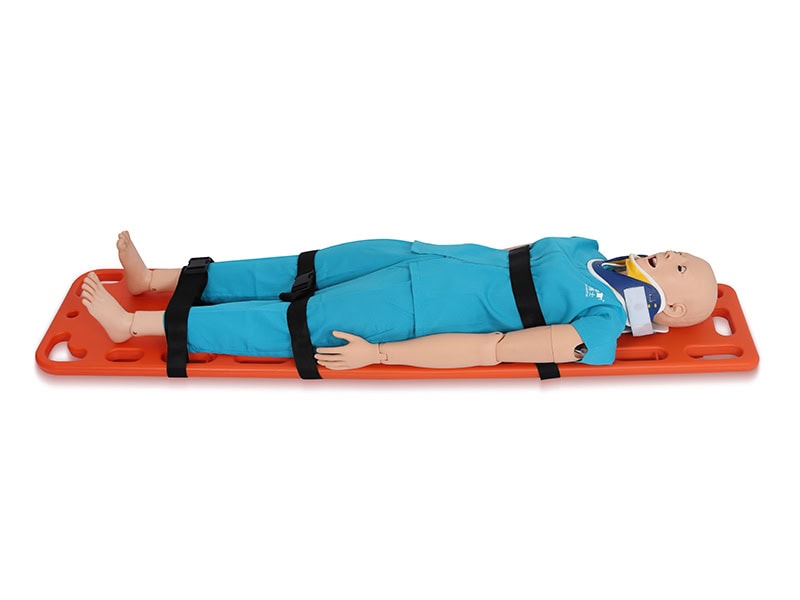
Injury Type and Patient Condition
Different injuries require different levels of support. The right spinal board stretcher minimizes movement while maintaining patient comfort and stability.
Patients with cervical spinal injuries need full immobilization to prevent further damage. A long spine board with separate leg strapping keeps the patient’s head, neck, and torso secure, working in tandem with a cervical collar. Additionally, an MR compatibility tapered design allows for medical imaging without requiring patient removal.
When dealing with respiratory compromise or unconscious patients, a vacuum spine board offers better adaptability. These stretchers mold to the patient’s body shape, providing customized support while preventing any restriction to breathing. This feature is particularly useful in long transport situations where patient comfort is as important as stability.
Transport & Rescue Conditions
A spinal board’s effectiveness depends on where and how it is used. Some models are better suited for ground transport, while others excel in aerial, water, or remote rescue operations.

For ambulance and hospital settings, long spine boards are commonly stocked due to their versatility. They provide reliable immobilization for a wide range of trauma cases, ensuring that EMS personnel can quickly and efficiently stabilize patients.
Rescue operations in rugged environments require more durable solutions. Basket stretchers with molded-in runners provide stability on uneven terrain while allowing for maximum maneuverability. Additionally, oversized hand holds make it easier for rescue teams to lift and carry patients in difficult conditions.
In water rescue situations, surgeons committee recommend a completely translucent spine board is ideal. These boards are designed with interior slots to secure flotation devices, preventing unnecessary movement while ensuring patient safety in aquatic environments.
Conclusion
Now that you understand the key considerations, it’s time t find the best solution for your emergency response team. JIEKANG proudly produces spinal board stretchers that combine quality engineering with safety designs for convenient usage.
With over ten years of experience in medical rescue equipment production, we offer boards with MR compatibility tapered design, impervious rotomolded HDPE shell models, and completely translucent models for specialized rescue operations.
Check out our spine boards and Rescue Stretchers and find the most suitable emergency rescue equipment for you.

